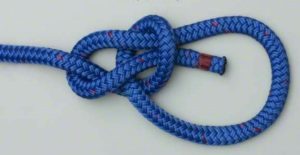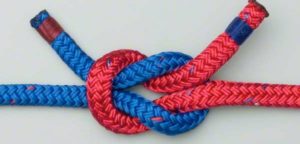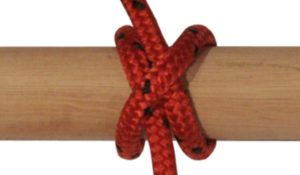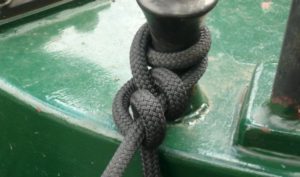Knot tying is an intrinsic part of boating and sailing, and imperative for staying safe when docked or on the water. Whether you’re a regular weekend boater or still just looking at used yachts in San Diego, here are 5 knots every sailor should know how to tie.
Cleat Hitch
The cleat hitch knot is most commonly used to secure a line to a boat or to tie a boat to the dock. It looks deceptively simple, and the number of turns recommended will vary by source due to the rope used, but when it doubt, add more.

Bowline
The bowline is possibly the most useful knot because it forms a temporary loop that will not jam or slip and has a variety of uses. The temporary loop is strong enough to tie a mooring line to a post or to a ring, it can be used to join two ropes, and in a pinch, boaters can also throw a bowline to someone overboard to help reel him or her back to the boat. If the bowline is not used to take any load, it is also easily untied.

Square Knot
The square knot is easy to make and often used to tie things down or to join two ropes when safety is not crucial. While square knots are easy to tie, they are also weaker than most other types of knots and can slip easily.

Clove Hitch
The clove hitch is used to secure a line to a post or a mooring temporarily and is often used when securing the fender of a boat to a railing. The clove hitch can be problematic because, ironically, it can both bind and slip.

Round Turn and Two Half Hitches
The round turn and two half hitches is similar to the clove hitch, but it is stronger and more permanent. This knot is often used to attach a mooring line to a ring or a dock post and will not become undone while under a load.

Whether you need helping tying knots or are ready to make a great investment, turn to Ballast Point Yachts, Inc. for all your boating needs. We are San Diego’s leading used yacht brokerage and can help you secure San Diego boat financing and insurance, and find you a marina slip perfect for your new toy. Give us a call at (619) 222-3620 for more information!
